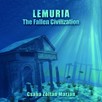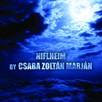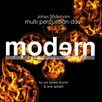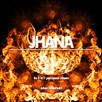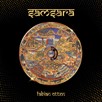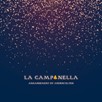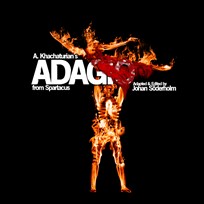
Adagio (From Spartacus)
Composer: Aram Khachaturian
Instrument: Marimba
Level: Advanced
Published: 2015
Price: €16.00
Item details
-
Description +
-
Arranged by Johan Söderholm
Duration: 9 min.
This arrangement is taken from the second act of Aram Khachaturians ballet Spartacus, where the main character (with the same name as the ballet) and his beloved Phrygia celebrates their escape from a life of slavery during the Third Servile War sometime between 73 & 71 BC. The theme has been recognized as a theme of love, and is used as the main theme for the TV-series The Onedin Line (1971-1980) and has also appeared in the movie Ice Age (2002) as well as Strebern (1994) by the Coen brothers.
-
-
Instrumentation +
-
Marimba (5-octave)
-
-
Watch+
-
About the composer +
-
Aram Il'yich Khachaturian (6 June 1903 – 1 May 1978) was a Soviet Armenian composer and conductor. He is considered one of the leading Soviet composers.
-
-
Reviews +
-
Percussive Notes, November 2016
This advanced transcription features the “love theme” from Act 2 of Khachaturian’s “Spartacus” ballet. Originally written for the symphonic pit orchestra, the Adagio has been adapted for piano/ orchestra, violin and piano, solo piano, and now solo marimba. Johan Soderholm has done a notable job keeping the most prominent lines intact, and creating a division of labor for the hands that is mostly manageable. Melodies are often doubled in right-hand octaves for projection and sustain.
The piece begins with a 12-bar introduction, after which the primary theme’s initial statement unfolds. Sixteen bars later, it is heard again a fourth higher, this time with arpeggiated chords running underneath. Suggested stickings in the arrangement should prove useful. Next, a brief interlude in the form of a slow, descending chromatic line is heard, leading to the statement of the more brooding second theme. This section will require a carefully rehearsed independence between hands, as the marimbist plays figures originally given in the orchestra to woodwinds and strings. A persistent two-against-three polyrhythm creates tension. This agitated theme builds, but does not resolve, eventually giving way to an ominous march-like section.
While the march is “technically” easier than other sections, the marimbist is presented with musical challenges so the music does not become stilted and square. This section ascends dramatically into the climax of the piece, which is a restatement of the first theme in D-flat major, again with chordal arpeggios underneath. Now the running notes move twice as fast as the earlier section (notated as thirty-second-note sextuplets). There is nothing similar in the original score, and it might have been preferable to simply leave the original ascending/ descending triplets from the harp and piano parts intact to recreate the richness of the original orchestration, rather than trying to fill each bar with 48 notes. The latter is certainly more impressive from a virtuosic standpoint, but if these six bars are playable at an acceptable tempo, it will require a monumental time commitment. After the climax, the music settles into the Neapolitan key of D major and softly restates its most lyrical lines. A nice sense of touch on the marimba is a must for this delicate ending.
This arrangement is very difficult, as one might guess with any orchestral reduction of this magnitude. A good performance will require a commanding arsenal of marimba chops, including one-handed rolls at the interval of a half/ whole step. The player must also grasp a firm musical independence between right and left hands; think Chopin, but on marimba! If you are looking for a passé marimba piece with lots of idiomatic patterns, this is not your rodeo, but it is truly lovely, memorable music. This ten-minute section from the ballet will require the grace of a ballerina to dance around the marimba and convincingly bring it to life. Is it worth the challenge? Perhaps; this is Khachaturian at his best.
—Phillip O’Banion
-
-
Credits +
-
Front Cover graphics and layout: Johan Söderholm
Engraving: Johan Söderholm / Johan Svitzer
Printed in Copenhagen, Denmark
Copyright © MUSIKVERLAG HANS SIKORSKI
www.editionsvitzer.com
-

